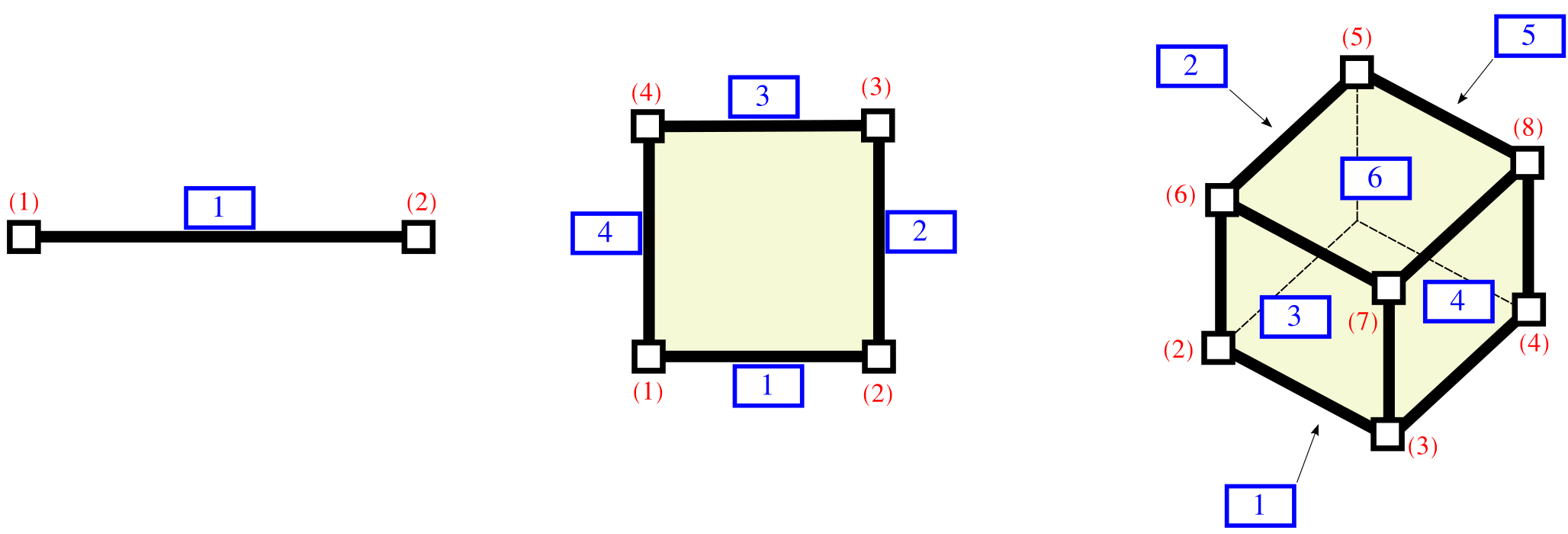The Surface is an entity (not a class) that defines an area on an element where tractions can be applied. The face number is provided according to the element connectivity. This information is store in the class using the member function
The traction information is store in the private member variable:
The figure below represents the face number for line, quadrilateral, and hexahedral elements. Note that this number depend on the connectivity of that face. Currently, the face number is computed in the Pre-Analysis using the python function SurfaceFace() loacted at 01-Pre_Process/Method/Compute.py file.

REFERENCE:
The python 01-Pre_Process/Method/Attach.py file provides with an interface to populate the Entities dictionary. A Surface can be added using the addSurface() function. This function will transform the provided information into json format to be parse in the Run-Analysis.
addSurface(tag, etag, conn):
Example
A SURFACE can be defined using the python interface as follows:
SVL.addSurface(tag=5, etag=2, conn=[5,6,7,8])
Application
Please refer to the D13-ST_Lin_3DSurfaceHorizontal_Elastic_Frame2.py or I02-ST_Lin_3DSurfaceLoad_Elastic_Hexa8.py file located at 03-Validations/01-Debugging/ to see an example on how to define a surface using the addSurface function.
The python 01-Pre_Process/Method/Compute.py provides with a function to compute the face number of an element provided with the connectivity .
On the contrary, the 01-Pre_Process/Method/Remove.py file provides with an interface to depopulate the Entities dictionary. For example, to remove an already define Surface, use:
The C++ 02-Run_Process/05-Loads/Loads.cpp file provides the surface declaration. A Surface is added to a Load using the Load::AddFaces() member function. A Surface is defined inside the "Surfaces" json field indicating its "Tag" as follows,
{
"Surfaces": {
"Tag": {
"element": int,
"face": int
}
}
}
| Variable | Description |
|---|---|
Tag | Unique surface object identifier. |
face | The face number on the element according to figure above. |
element | The unique element identifier or Tag. |
A SURFACE with tag 5 defined in the element 2 on face 3 corresponding to connectivity [5,6,7,8] :
{ "Surfaces": { "5": { "element" : 2, "face" : 3 } } }